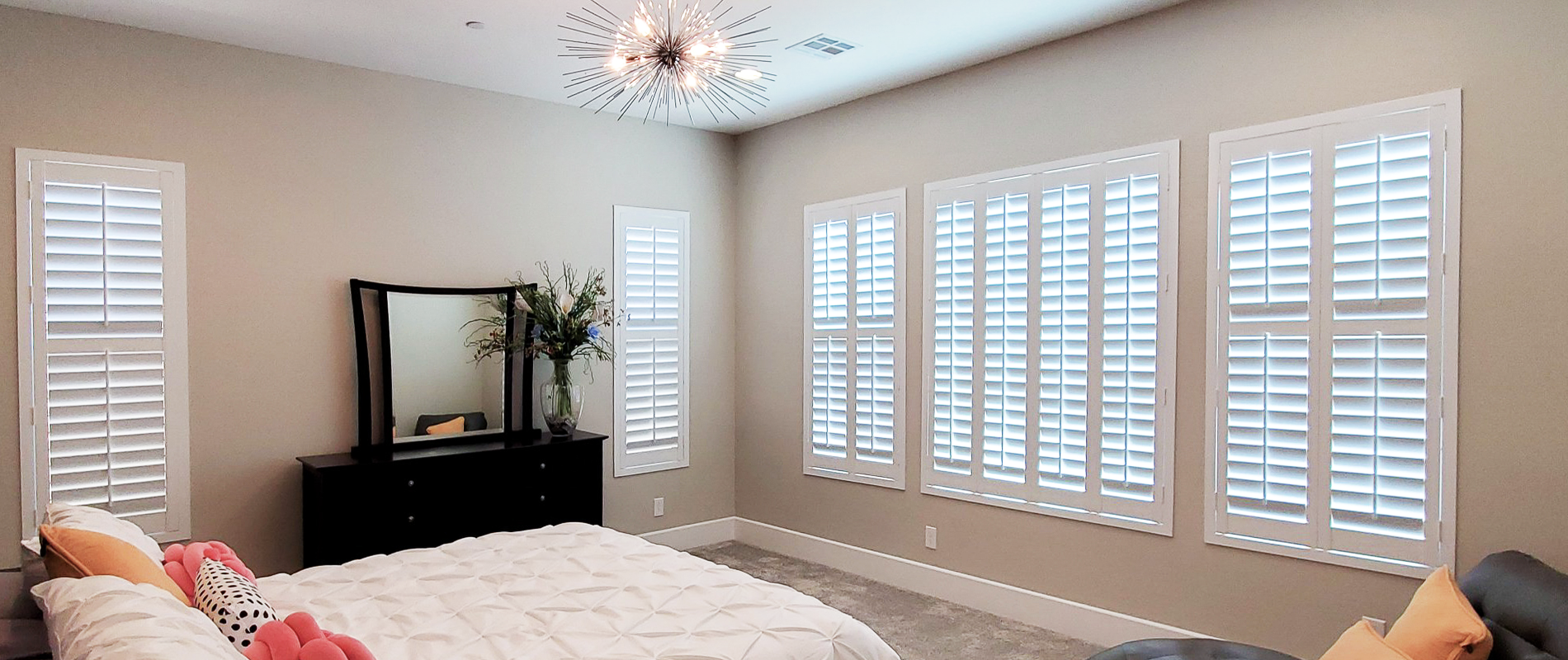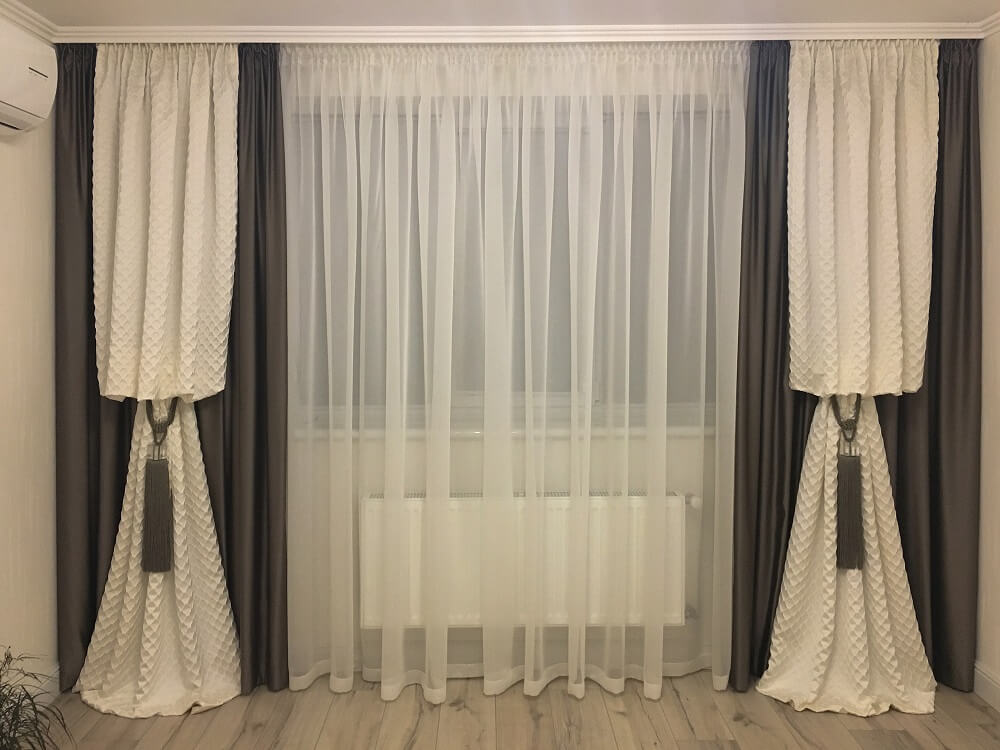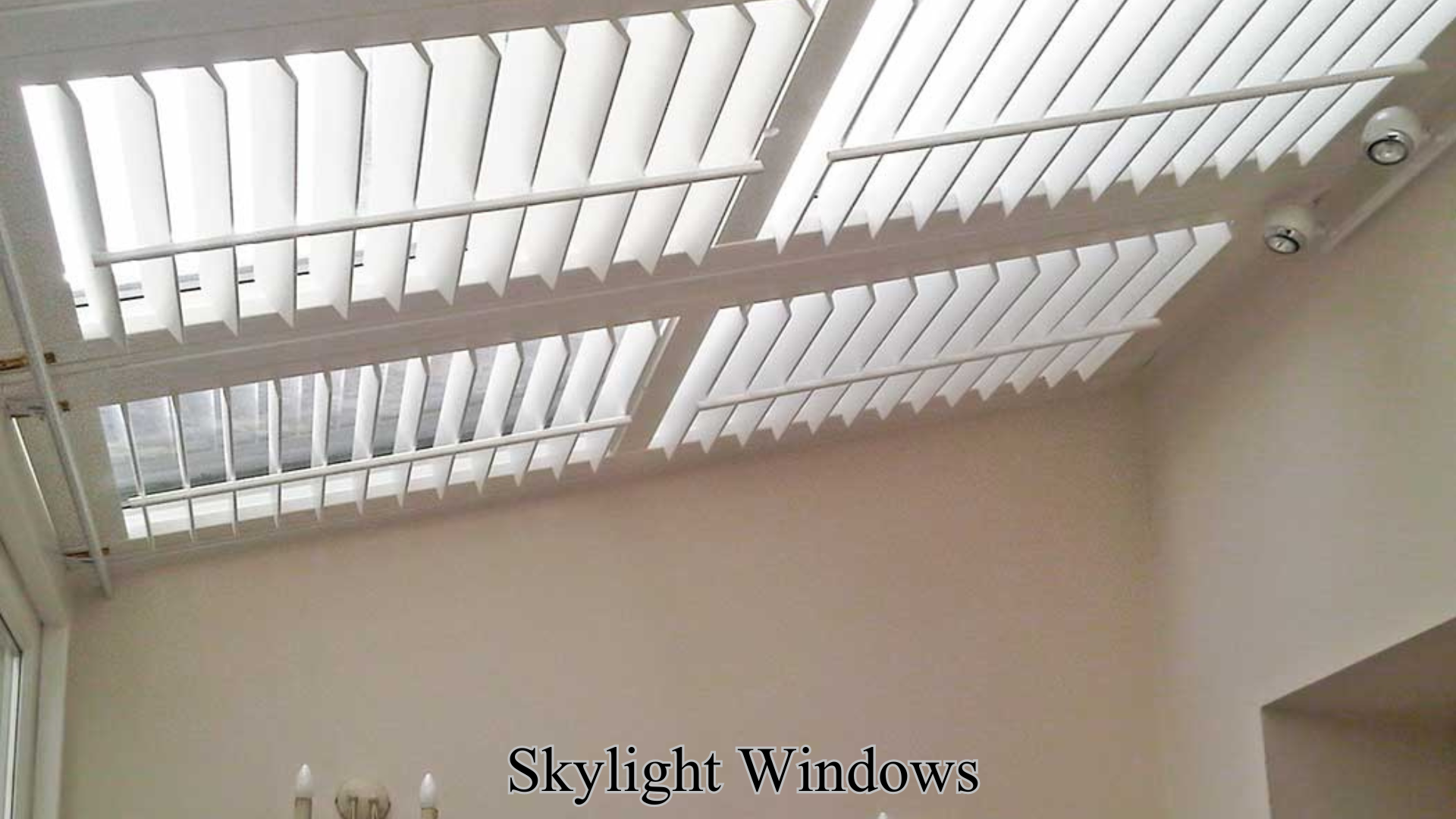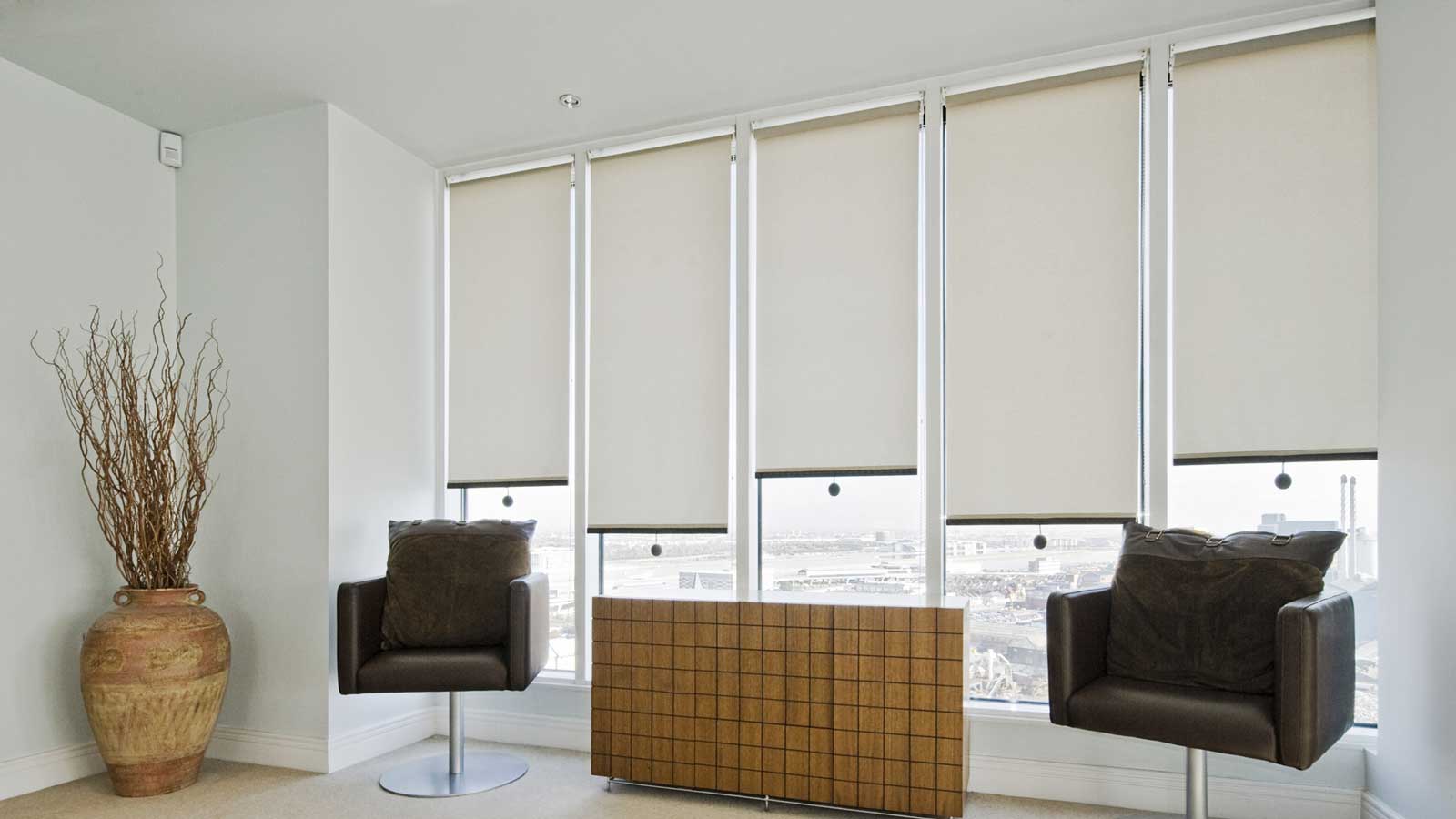Factory Direct. We Bring The Store To Your Door.
FREE IN HOME ESTIMATES


When it comes to layering window treatments in your home or upscale office, you want style to meet art and create a seamless palate that flows and ties every room together. Whether you’re updating an existing home or creating new surroundings, here’s some priceless tips to help you correctly layer interior window treatments.
The first and most important thing to consider in layering window treatments is what you wish to have as your main attraction for the window and their coverings. It might be plantation shutters, shades, or fabric. Perhaps soft treatments such as valances or side panels or curtains. Whatever the main theme, pick one and stick to it. It’s going to be the basic foundation of your design.
In general, base elements should be neutral in color and not overly flashy in design or structure, unless you’re striving for an ultra-modern or Neo-statement.
When it comes to using plantation shutters as a base element, generally keep using the same frame design and width of louvers throughout all rooms. This makes them the main attraction and maintains atmospheric balance as people walk from room to room.
Once you have determined the overall base design, let’s say plantation shutters with side curtains, you can begin to play with the individuality of each room. While you keep the base elements the same you might change the curtain colors, textures, fabrics, or make subtle changes in patterns. Now that you have a well-balanced based theme selected, it’s time to begin layering.
How many layers are adequate?
The number of layers depends upon your stylistic eye and the number of barriers you wish to put between incoming heat and cold. Obviously, the more layers used the better the barrier to drafts, incoming sunlight, visual privacy from outside, and blowing dust. Most people use one to two layers and consider three the maximum. When you step up to four layers, it gets very busy. Too many layers make windows “heavy,” pulling eyes into them like an overly large bookcase on a wall. This many layers only tend to work in rooms with very heavy, baroque furniture or a lot of wall coverings like pictures, tapestries, or shelves.
What are some good layering techniques?
A common choice for layering is full or side curtains. You can use a similar style and simply alter colors as you go along to better match each room. They’re easy to mount and hang and quite affordable, if you will shop around.
Soft treatments can be a nice touch. This is where, for example, you wrap up core shapes, like long rectangles, in a fabric and mount them like accent pieces right next to the windows. The size, textures, and colors create visual highlights and add a visual layer.
Over window valances can be used the same way.
Some people mount shades at the top of shutters when they want ultimate light blockage. This look is an acquired taste for most for sure.
Now, some people actually prefer breaking the window up by using different types of coverings on the same window, say shutters on the bottom half and shades or blinds on the top half. You have to be especially adroit at attempting this or call in a strong interior designer to help.
All in all, pay attention to colors and patterns. And stay true to your overarching theme whether it is traditional, playful, inventive, or intrusively bold.
Before you get too far down the road, why not contact the internationally known design consultants at Best Buy Shutters? They have already helped thousands of southern Nevadans just like you. Their help is free. It’s worth taking a look because you’ve got nothing to lose. They’ll bring free fabric and shutter design samples, hardware options, pictures of various styles and installations, and a wealth of expertise.




We make it easy to have the window coverings you need now and you can pay over time. Your Best Buy Shutters Design Consultant will go over all options and help you through the entire process.
We bring shutters, shades, and blinds samples so you can shop at home, and we measure your windows to give you an exact quote right then and there.